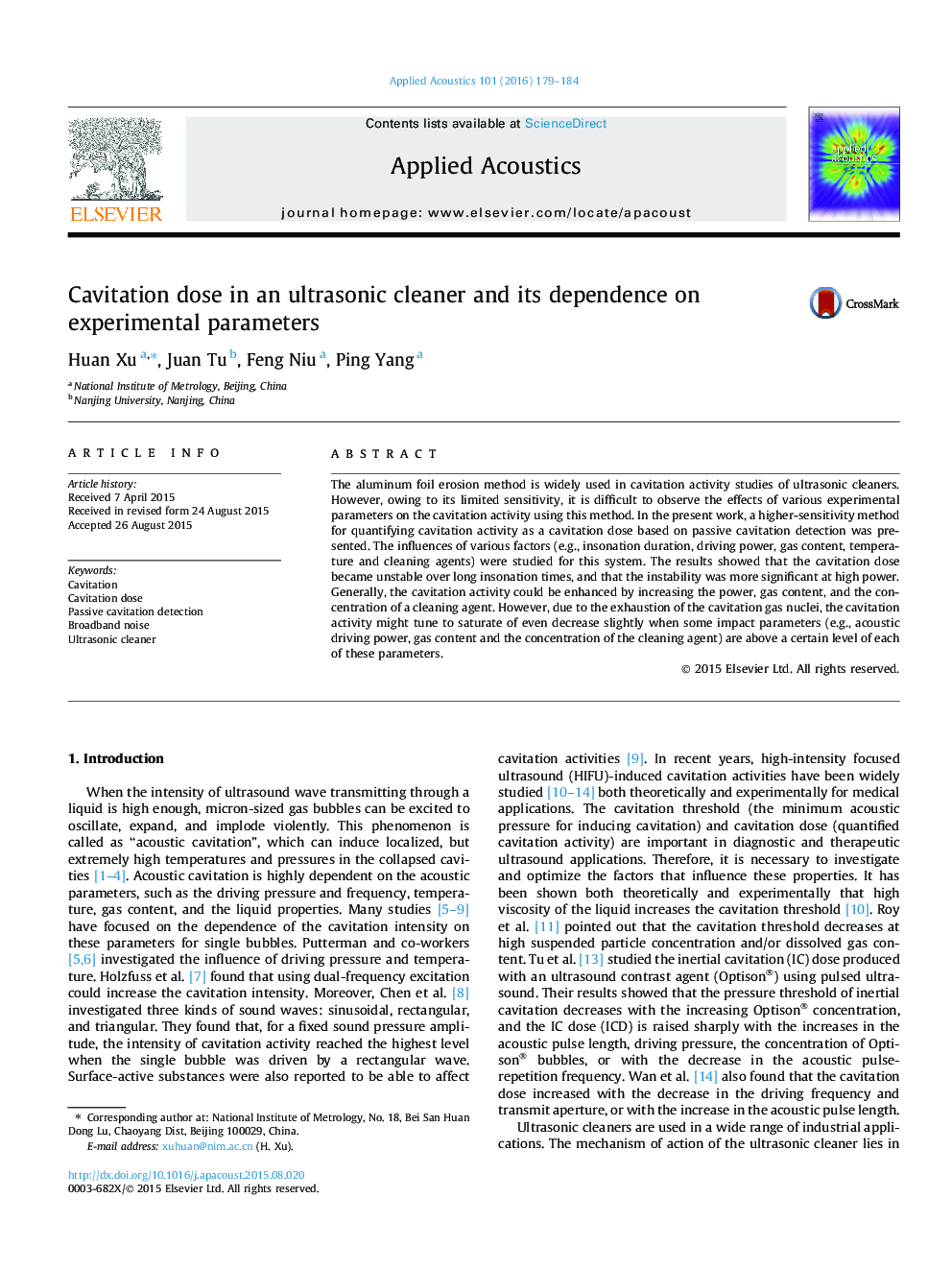| Article ID | Journal | Published Year | Pages | File Type |
|---|---|---|---|---|
| 7152631 | Applied Acoustics | 2016 | 6 Pages |
Abstract
The aluminum foil erosion method is widely used in cavitation activity studies of ultrasonic cleaners. However, owing to its limited sensitivity, it is difficult to observe the effects of various experimental parameters on the cavitation activity using this method. In the present work, a higher-sensitivity method for quantifying cavitation activity as a cavitation dose based on passive cavitation detection was presented. The influences of various factors (e.g., insonation duration, driving power, gas content, temperature and cleaning agents) were studied for this system. The results showed that the cavitation dose became unstable over long insonation times, and that the instability was more significant at high power. Generally, the cavitation activity could be enhanced by increasing the power, gas content, and the concentration of a cleaning agent. However, due to the exhaustion of the cavitation gas nuclei, the cavitation activity might tune to saturate of even decrease slightly when some impact parameters (e.g., acoustic driving power, gas content and the concentration of the cleaning agent) are above a certain level of each of these parameters.
Related Topics
Physical Sciences and Engineering
Engineering
Mechanical Engineering
Authors
Huan Xu, Juan Tu, Feng Niu, Ping Yang,
